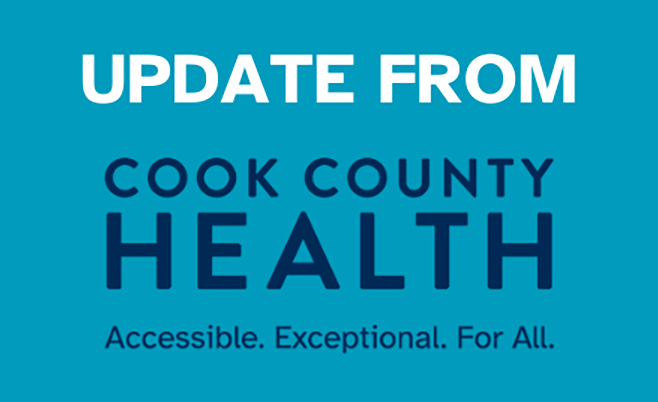The Cook County Health (CCH) is making PrEP, an HIV-preventive medication, more accessible to people who are at high risk for getting the virus by expanding the number of health centers that prescribe the medication, as well as clinic hours, outreach, and staffing.
If taken daily, the FDA-approved PrEP (Pre-Exposure Prophylaxis) has been shown to reduce the risk of HIV transmission by 92 percent for people who are at high risk for becoming infected, the Centers for Disease Control and Prevention (CDC) notes.
CCH is launching PrEP programs at two of its clinics on Chicago’s West Side this fall. CCH’ Provident Hospital on the South Side is also partnering with community-based groups to do more outreach efforts for its PrEP program, so that more people who may be at risk of contracting HIV know about the resources and clinical services available to them if they choose to start PrEP. And CCH’ Ruth M. Rothstein CORE Center, which provides care for persons with HIV and other infectious diseases, has extended the hours of its PrEP clinic to 5 days a week.
“We’re committed to doing all we can to reduce new HIV infections, and PrEP is an integral part of that,” said Dr. David Schwartz, Chair of Infectious Diseases at CCH.
The CDC is encouraging health providers to provide PrEP to their patients to help drive down the prevalence of HIV infection throughout the country, as the drug is credited with helping reduce new HIV infection rates in San Francisco and New York City.
CCH’ Austin Health Center, 4800 W. Chicago Ave., Chicago, launched a PrEP clinic on August 15. Dr. Jorge Prieto Health Center, a CCH clinic located at 2424 S. Pulaski Road, Chicago, opened its PrEP clinic today on September 15. Both will be open two to three days a week.
Provident Hospital, 500 East 51st Street, Chicago, offers PrEP and treatment of Hepatitis C every Wednesday morning from 9 a.m. – 1 p.m. and will expand hours as demand increases.
Meanwhile, the CORE Center is only the second health center in metropolitan Chicago to offer clinic hours 5 days a week for patients seeking a prescription of PrEP, said Dr. Schwartz.
Since July 5, CORE, 2020 W. Harrison St, Chicago, has expanded its hours to 5-days a week from 9 a.m. to 3 p.m., from just three afternoon clinic sessions per month.
To determine eligibility for PrEP, clinic staff assesses patients’ risk of contracting HIV, their overall health status and other factors, including their likelihood of adhering to a daily medication regimen. Patients who start PrEP receive counseling about medication adherence and reducing risk of infection for HIV and other sexually transmitted infections.
The CORE Center PrEP Clinic enrolled approximately 230 patients from April 2015 to June 2016. Data on how many additional people have been seen since the expansion is not yet available, but Dr. Schwartz said there’s no question that “having PrEP only available on two or three days a month was missing a lot of people who could have been helped.”
Commercial insurance plans cover the cost of PrEP prescriptions. CORE Center staff also help individuals without insurance navigate the manufacturer’s assistance program to obtain their medication, so very few patients who qualify for PrEP have financial barriers in getting the drug, Dr. Schwartz points out.
CCH was able to expand and implement PrEP services at the four locations, thanks in part to $506,000 in grant money awarded by the Chicago Department of Public Health (CDPH).
Through its outreach, CCH is raising awareness about PrEP’s availability to groups that are known to have a higher risk of contracting HIV.
In Chicago, new HIV infections rates in 2014 were found to be highest among those who were male (83.2 percent), were reported as having sex with males (78.3 percent), and were 30 years of age or older at diagnosis, according to Chicago Department of Public Health’s 2015 HIV/STI Surveillance Report. The same report also found that new HIV infection rates in 2014 were higher among African-Americans (57.6 per 100,000) and Hispanics (27.6 per 100,000) compared to whites (24.6 per 100,000).
Nationally, transgender women were also shown to have high rates of HIV infection, affecting 22 percent to 28 percent, the CDC noted. That is especially true for transgendered women of color, studies show.
For more information, please visit our CORE Center’s Patient & Visitor Services.

